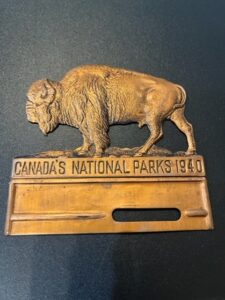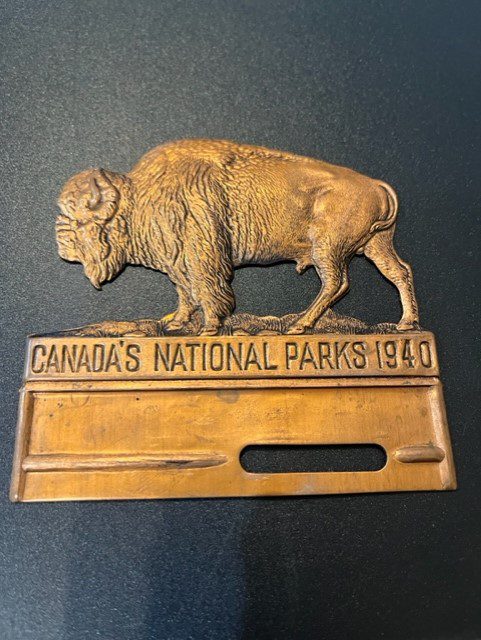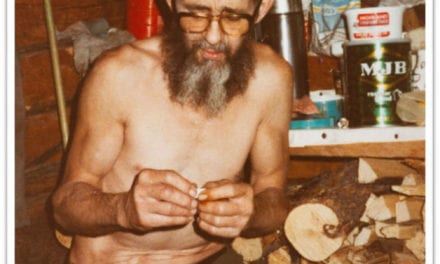1925 – 1940 National Park Vehicle Entry PassesBy Rod Wallace who retired as Cultural Resource Officer, Jasper National Park in 2006.
His life career was in the National Parks of Canada. One of Rod’s hobbies is collecting National Park Vehicle Entry passes.
Vehicle entry into our National Parks began in the early 1900’s after construction of dirt paths and gravel roadways were introduced into Banff National Park during the 1920’s. Previously, only railway access to Banff and Jasper allowed visitors to depart the train, and visit via horseback or “Tally Ho” wagon from the train station.
A “new” metal Buffalo style vehicle pass was introduced in 1925, and used as a roadway National Park pass in the mountain Parks until 1940. These annual passes originally cost $1 and later $2, and were intended to be mounted to the front bumper or radiator shell of the vehicle, so the gate attendant could see them on vehicle entry to the Park. The first metal used was a copper “walking buffalo” with “CANADIAN NATIONAL PARKS” on the base and no date on it. Each year after the metal used was alternated between aluminum, brass and copper (A.B.C.). Six mounting screw holes were drilled in the original plates, until 1930 when the holes drilled were reduced to four. The first three years (1925, 1926 and 1927) did not have a date on them, but were made of copper, aluminum and brass to distinguish each year. 1928 and 1929 (copper and aluminum) only had .8 and.9 dates to distinguish them, and the name was changed to “CANADA’S NATIONAL PARKS”. 1930 AND 1931 (brass and copper) used .30 and .31 to date each.
Beginning in 1932, a more detailed “standing” buffalo was crafted, with the full date. In 1939 and 1940, mounting holes were removed, and a base plate with a slotted mounting bar opening was added. The use of metal for entry passes was discontinued during the Second World War to help assist the war effort. Paper receipts were then used, until window stickers – first buffalo, then elk, and eventually a stylized beaver – were used into the 1990’s.
n 1938, 1939 (aluminum) and 1940 (copper), circular metal passes were also produced for use in the prairie National Parks. They had a single mounting hole base, and the date in the beaver lodge that the beaver sat on. Again the use of metal was discontinued for the Second World War. 1942 saw a paper bison sticker replica produced for a few years. During the 1930’s Saskatchewan Natural Resources produced an aluminum beaver, “SNR Parks” for use in that province at the time.
Other provinces and local communities used a moose, elk, or fish (Waterton) metal format promoted by local Chamber of Commerce groups. Many “commemorative plate reproductions” have been produced since the National Parks centennial in 1985. Banff National Park did one of the first, then Elk Island for 1906, and Jasper for 1907 (100 Year Park commemorations). The Jasper Museum also produced replicas in a metal alloy format, for use as a fund raising effort in the early 2000’s.
The metal plates were stamped in three different locations, Winnipeg, Ottawa and Vancouver where various contracts were let to produce them. Some have the maker’s location stamped on the back. Counterfeit copies were common, and many have had the dates altered in an effort to avoid paying the next year’s fee when entering the Park. Examples of all of the original metal passes are considered rare to extremely rare and of significant value!






Recent Comments